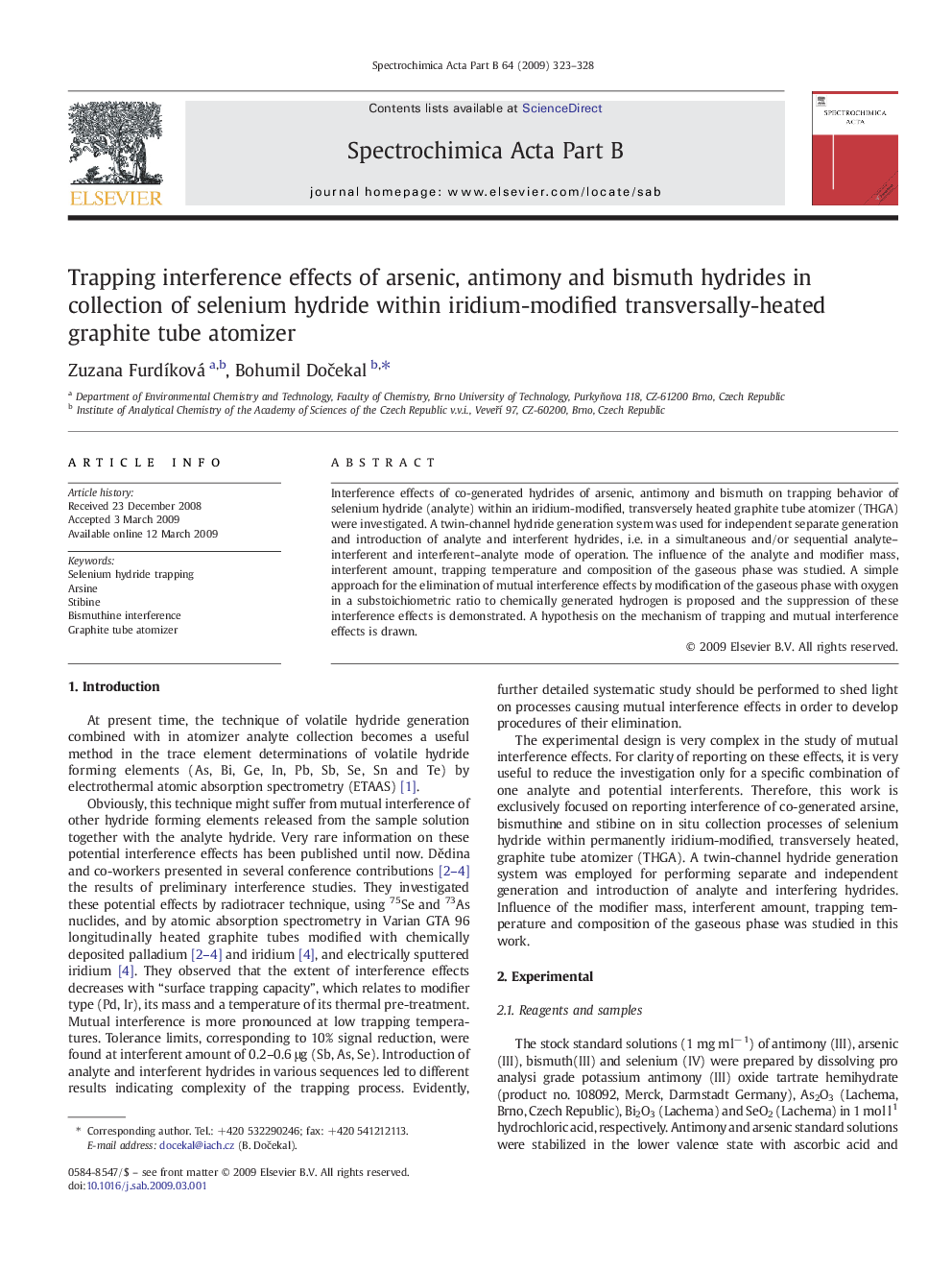| Article ID | Journal | Published Year | Pages | File Type |
|---|---|---|---|---|
| 1240396 | Spectrochimica Acta Part B: Atomic Spectroscopy | 2009 | 6 Pages |
Interference effects of co-generated hydrides of arsenic, antimony and bismuth on trapping behavior of selenium hydride (analyte) within an iridium-modified, transversely heated graphite tube atomizer (THGA) were investigated. A twin-channel hydride generation system was used for independent separate generation and introduction of analyte and interferent hydrides, i.e. in a simultaneous and/or sequential analyte–interferent and interferent–analyte mode of operation. The influence of the analyte and modifier mass, interferent amount, trapping temperature and composition of the gaseous phase was studied. A simple approach for the elimination of mutual interference effects by modification of the gaseous phase with oxygen in a substoichiometric ratio to chemically generated hydrogen is proposed and the suppression of these interference effects is demonstrated. A hypothesis on the mechanism of trapping and mutual interference effects is drawn.
